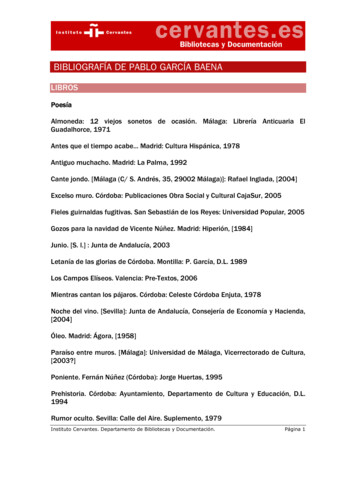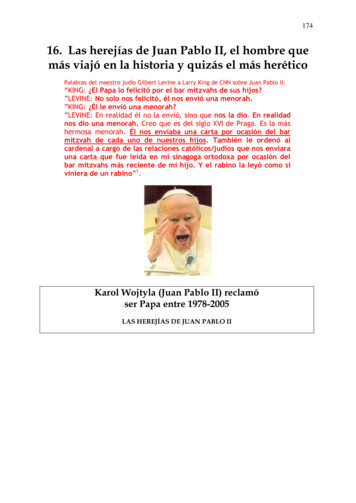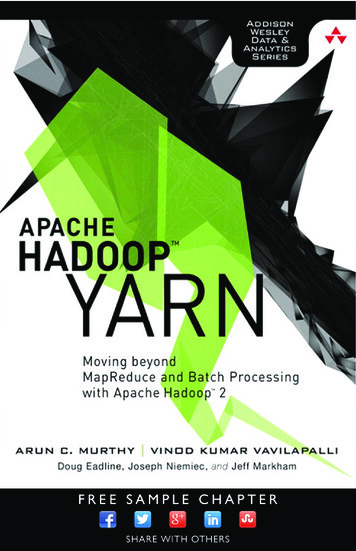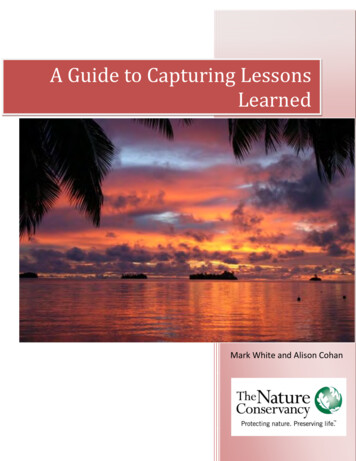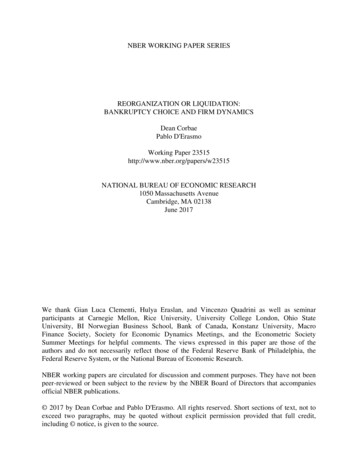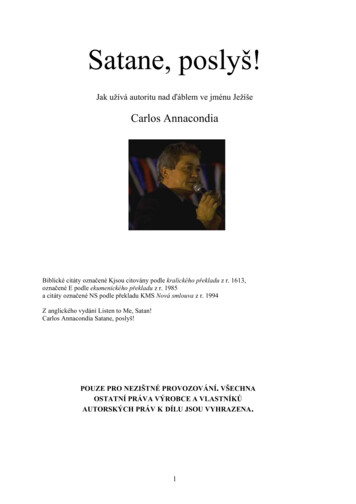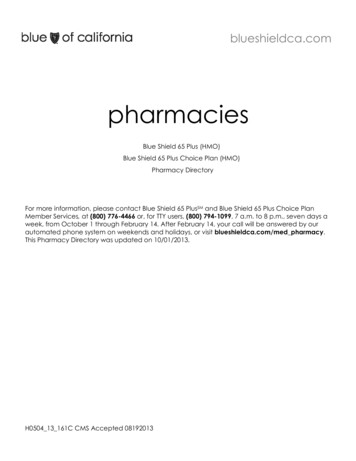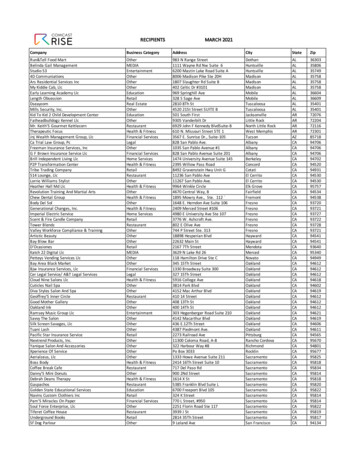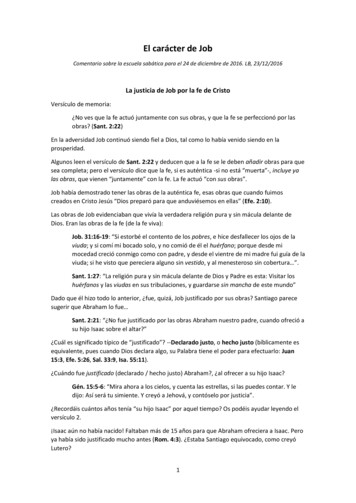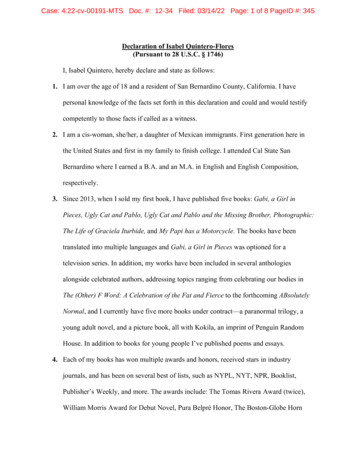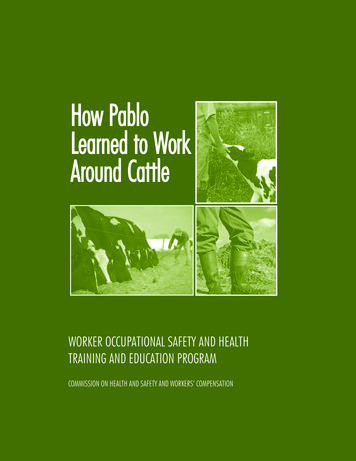
Transcription
How PabloLearned to WorkAround CattleWORKER OCCUPATIONAL SAFETY AND HEALTHTRAINING AND EDUCATION PROGRAMCOMMISSION ON HEALTH AND SAFETY AND WORKERS’ COMPENSATION
This fotonovela is part of the Dairy Safety Package developed by the Western Centerfor Agricultural Health and Safety (WCAHS), University of California, Davis. Thesematerials are part of the Worker Occupational Safety and Health Training and EducationProgram (WOSHTEP), which is administered by the Commission on Health and Safetyand Workers’ Compensation (CHSWC) in the Department of Industrial Relationsthrough interagency agreements with the Labor Occupational Health Program (LOHP),University of California, Berkeley, the Western Center for Agricultural Health and Safety(WCAHS) and the Labor Occupational Safety and Health Program (LOSH), Universityof California, Los Angeles.Users are encouraged to photocopy or adapt this information as needed for educationalpurposes. Please credit CHSWC, WCAHS, LOHP and LOSH.
Pablo is a young man,and this is his firstweek working at adairy.Are you OK, Pablo?You look pale!José is an experiencedworker at the samedairy.Yes, it is only a bruise.I was trying to helpmove some cowswhen one pushed meagainst the fence.21The following day. . .Sorry, Pablo. It sounds like you needsome more training. Let’s take you toget checked. When you are back, wewill review some basic concepts.To work safely around cattle, you need to understand them. Let’s talk about some importantthings: (1) the blind spot; (2) the flight zone;(3) signs of stress; and (4) the point of balance.Thanks, José!34
This is because your eyes are at the front of yourface. But take a look at the cow’s head; its eyesare on the sides.Face me, Pablo. Whatis the area you can seewell?In front of me.65A cow can see well to its sides, but not very wellto the front. Like you, a cow cannot see what isbehind it; this area is called the blind spot. If youapproach a cow from behind, it will not see whatis coming; it only will hear the noise. A startledcow may kick you.Now, let’s talk about the flight zone. Whatwould you do if suddenly I try to come too closeto you? You move away, right?78
In the same way you tried to move away when Icame too close, a cow will also feel uncomfortable ifsomeone unfamiliar is too close. Cows determine animaginary safety area around themselves. This areais called the flight zone. A bull’s flight zone is largerthan that of a cow. For a bull, it will generally beabout 20 feet around.When the handler enters the flight zone, the animalmoves away, trying to keep its distance. The morecomfortable a cow feels with the handler (or whenthere is a barrier in between), the smaller the flightzone will be.109When the handler is outside the flight zone,cows/bulls will turn their bodies, keeping an eyeon him. Cows are curious animals; they want tosee what is around them.When cows/bulls are agitated, the flight zone iswider. For signs of stress, look at their tail andears; when the tail is relaxed, the animal is relaxed.Look to see if their ears are pointing; cows pointtheir ears toward a source of concern.1112
When its tail is tucked between its legs, the animal may be sick or frightened. The more stresseda cow/bull feels, the longer it will take for theanimal to calm down, and the more hazardous itcould be to handle.If an animal is lying down and does not try to moveaway when you are approaching, something iswrong. Do not try to move it by yourself, becausethe animal may be sick or hurt. You do not knowhow it may react if it feels threatened; you could bekicked, crushed or bitten.13Cows/bulls have an excellent memory for good orbad experiences. For example, once an animal ishurt with a prod, just seeing the tool may cause itto feel stressed again, and you will not know how itmay react.1514Other signs of stress are butting, bellowingand kicking. Paying attention to these signs isimportant, especially around bulls – it means theyare ready to attack! When a bull is getting readyto attack, it may also display a broadside view,with his head lowered, its back arched, and its neckcurved towards the threat.16
If you see a bull displaying attack signs, NEVERtry to run because running may start a chase. Also,NEVER turn your back to the bull. Move awayfrom its flight zone calmly, always facing the animal.You may use a cane or plastic pole to look bigger.Other signs of a bull getting ready to attack areshaking its head rapidly from side to side and pawing the ground with energy.1817The next important thing to understand is howto move the animals without touching them orshouting. To do this, you need to know where thepoint of balance is. The point of balance is at theanimal’s shoulder.All species of livestock move forward and/orbackward as the handler moves in relation to theanimal’s point of balance. If you want an animal tomove forward, position yourself behind the pointof balance.1920
If you want it to move back, stand in front of thepoint of balance.When going through a chute, groups of animals willoften move without prodding when the handlerwalks past the point of balance in the oppositedirection he wants the animals to move. The handlercould also tap on the chute as he walks by. It is notnecessary to prod the animals.2221Remember, to work safely around these animals,you need to understand (1) the blind spot; (2) theflight zone; (3) signs of stress; and (4) the point ofbalance.When moving an animal, always have an escaperoute, in case something happens. Do not placeyourself between an animal and a fence or a wall;they are big animals and can hurt you whenmoving.2324
Cows are herd animals – this means that theywant to be together and will follow each other.Once one of them walks in the direction youwant, the rest will follow. Just reposition yourselfin relation to the next animal; they will keepmoving. Remember to keep your movements slowand controlled because sudden movements maycause them to become frantic.Thank you, José.Your advice wasvery helpful.These are usually gentle animals.Good handling practices willreduce their stress and reduceyour chances of getting hurt. Donot be afraid; you are in control!2526
For More InformationWestern Center for Agricultural Health and SafetyUniversity of California, DavisOne Shields AvenueDavis, CA 95616(530) 752-4050http://agcenter.ucdavis.edu
cows/bulls will turn their bodies, keeping an eye on him. Cows are curious animals; they want to see what is around them. When cows/bulls are agitated, the flight zone is wider. For signs of stress, look at their tail and ears; when the tail is relaxed, the animal is relaxed. Look to see if their ears are pointing; cows point
